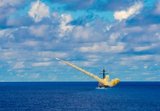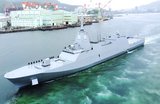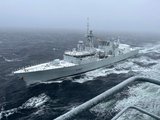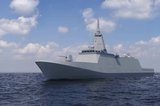DoD awards ESSM support contract
Evolved SeaSparrow Missile. (Photo: Raytheon)
Raytheon is providing more Evolved SeaSparrow Missile (ESSM) Block 2 parts and ESSM Block 1 test equipment for the USN and FMS customers, the DoD announced on 13 May.
‘This is a sole-source contract action pursuant to an international agreement,’ the DoD added.
The latest $9.38 million deal brings the cumulative value of the contract from Naval Sea Systems Command to $17.19 million.
The order combines purchases for the Navy (64%); international consortium nation navies (34%); and the government of Japan (2%) under the FMS programme.
Work will be performed in El Segundo, California (62%); and Tucson, Arizona (38%), and is expected to be completed by September 2022.
Related Equipment in Defence Insight
More from Naval Warfare
-
![Future Canadian Continental Defence Corvette will provide “Halifax-equivalent capabilities”]()
Future Canadian Continental Defence Corvette will provide “Halifax-equivalent capabilities”
Although the CDC project is still in its early stages, the Canadian Department of National Defence already has some requirements for the future platforms.
-
![US Navy to acquire micro-uncrewed underwater vehicles for ISR and coastal data collection]()
US Navy to acquire micro-uncrewed underwater vehicles for ISR and coastal data collection
The Naval Supply Systems Command is seeking authorised resellers of JaiaBot uncrewed underwater vehicles and multivehicle pods. The platforms will support undergraduate education at the US Naval Academy.
-
![NATO tests use of “undetectable, jam-proof” laser communication in maritime scenarios]()
NATO tests use of “undetectable, jam-proof” laser communication in maritime scenarios
As part of its effort to better prepare its capabilities for operations in contested and congested scenarios, NATO evaluated a Lithuanian ship-to-ship terminal designed to not be susceptible to enemy interference.
-
![Future of the Canadian Patrol Submarine Project is still unclear]()
Future of the Canadian Patrol Submarine Project is still unclear
The Canadian government remains tight-lipped on the timeline and funding required for the next steps of its Canadian Submarine Patrol Project, which should offer improved capabilities for the country’s navy.
-
![Mitsubishi eyes future with Australia’s Mogami selection]()
Mitsubishi eyes future with Australia’s Mogami selection
With Australia’s selection of the Mogami-class for Project Sea 3000, Mitsubishi is investigating local production in the next decade as potential export opportunities emerge.
























